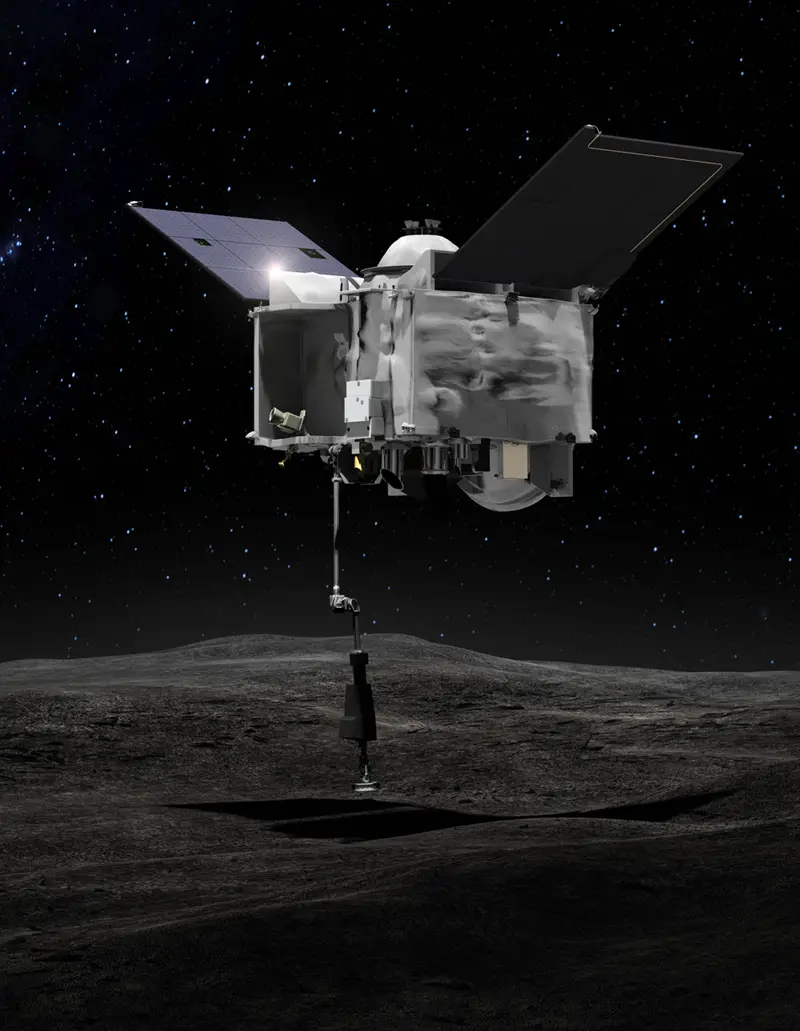
9th September 2016 NASA launches asteroid sample return mission NASA has launched the seven-year OSIRIS-REx mission, which aims to reach a 500m-wide asteroid and return a sample to Earth in 2023.
NASA's first asteroid sampling probe was launched yesterday evening at 7:05 p.m. EDT from Cape Canaveral in Florida, beginning a mission that could revolutionise our understanding of the early Solar System. The Origins, Spectral Interpretation, Resource Identification, Security-Regolith Explorer (OSIRIS-REx) is designed to arrive at, study, and return a sample of the asteroid Bennu. Objects like Bennu are remnants from the formation of our Solar System around 4.6 billion years ago. Scientists believe that asteroids may have been a source of the water and organic molecules for the young Earth and other planetary bodies. An uncontaminated asteroid sample from a known source would enable precise analyses – providing results far beyond what can be achieved by spacecraft-based instruments or by studying meteorites that fell to Earth. OSIRIS-REx will approach Bennu in August 2018, mapping the asteroid in 3-D, while studying its characteristics in preparation for the sample collection. Then in July 2020, the spacecraft will perform a daring manoeuvre in which its 11-foot arm will reach out and perform a five-second "high-five" to stir up surface material, collecting up to 2 kg (4.4 lb) of rocks and dust in a sample return container. It will bring the sample back to Earth in September 2023, when it will be transported to NASA's Johnson Space Center in Houston for detailed examination.
OSIRIS-REx will be the first U.S. mission to bring samples of an asteroid back to Earth and the largest sample returned from space since Apollo 17. Following its launch into space, the probe separated from its Atlas V rocket at 8:04 p.m. The solar arrays were successfully deployed and are now powering the spacecraft. "It's satisfying to see the culmination of years of effort from this outstanding team," said Mike Donnelly, project manager. "We were able to deliver OSIRIS-REx on time and under budget to the launch site, and will soon do something that no other NASA spacecraft has done – bring back a sample from an asteroid." In addition to its robotic sampling arm, the probe features a camera suite that will obtain high-resolution imaging and records of the sample acquisition. "PolyCam", an 8-inch telescope, will take photos with increasingly high detail as the spacecraft approaches the asteroid. "MapCam" will search for any outgassing plumes or natural satellites, as well as fully mapping the asteroid in 3-D and in four different colours. A third and final camera, "SamCam" will continuously document the sample acquisitions. A member of the Apollo group, Bennu is a potential Earth impactor that is listed on the Sentry Risk Table and has the third highest rating of any object on the Palermo Technical Impact Hazard Scale. There is a 1 in 2,700 chance of it colliding between the years 2169 and 2199. With a mean diameter of 492m (1,614 ft), and travelling at 63,000 mph, it is calculated that such an impact would have a kinetic energy of 1200 Megatons. This would be 24 times more powerful than the Tsar Bomba, the largest nuclear weapon ever detonated, or about 80,000 times greater than the bomb dropped on Hiroshima.
---
Comments »
|








